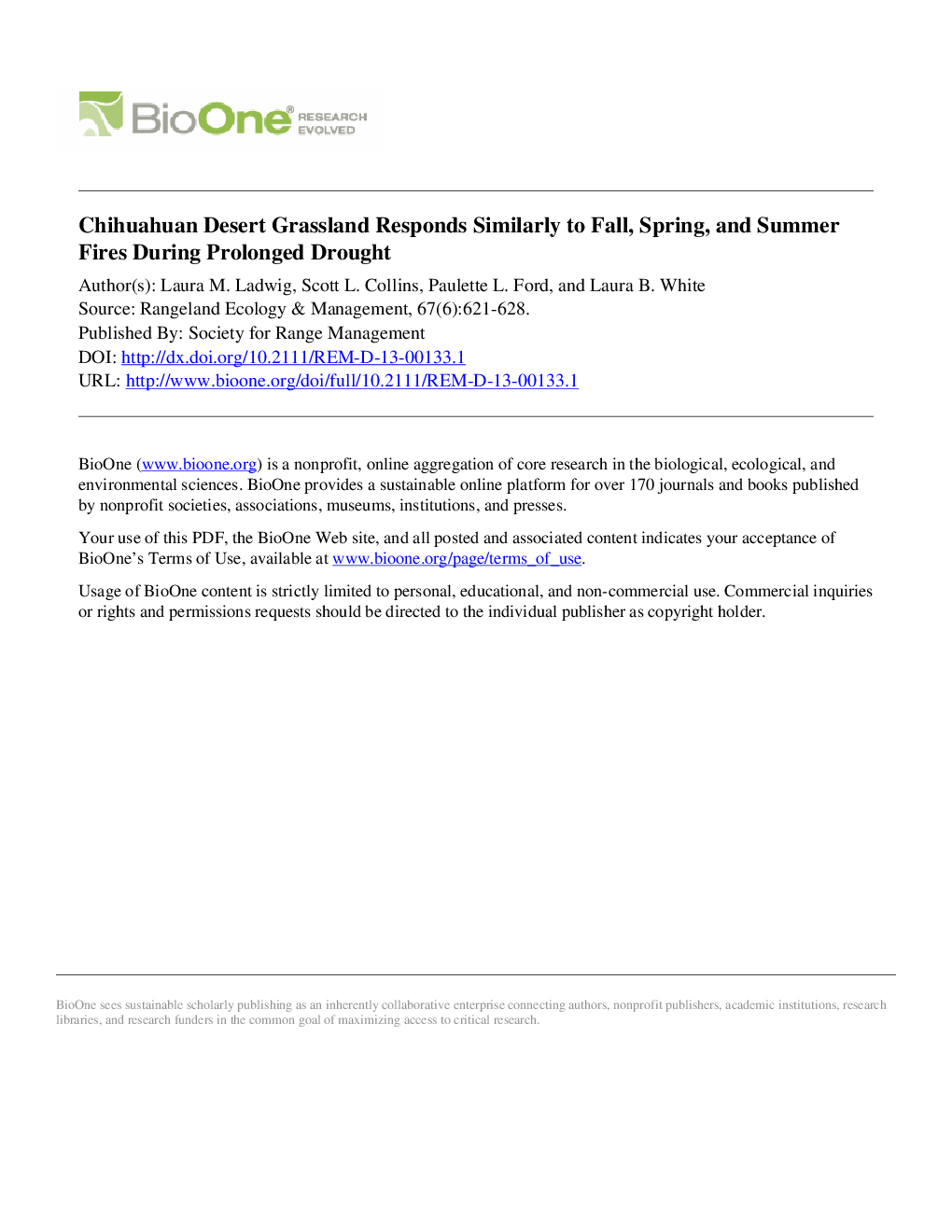| Article ID | Journal | Published Year | Pages | File Type |
|---|---|---|---|---|
| 4404367 | Rangeland Ecology & Management | 2014 | 9 Pages |
Abstract
Land managers frequently use prescribed burning to help maintain grassland communities. Semiarid grassland dynamics following fire are linked to precipitation, with increasing soil moisture accelerating the rate of recovery. Prescribed fires are typically scheduled to follow natural fire regimes, but burning outside the natural fire season could be equally effective and more convenient for managers, depending on their management objectives. We conducted a field experiment in desert grassland to determine if fire seasonality influenced plant community recovery. Experimental burn treatments occurred in fall, spring, and summer in replicate 0.24-ha plots to determine if fire seasonality affected the rate of recovery of an ungrazed Chihuahuan Desert grassland in central New Mexico. Plant communities were surveyed seasonally for 5 yr after the burns. Grassland community structure responded to fire but not fire seasonality. Grass cover in all burned treatments remained lower than unburned controls for 3 yr after the burns. Community change through time was largely influenced by low rainfall, as grass cover in burned and unburned communities converged during a year with severe drought. In conclusion, fire seasonality did not influence rate of community recovery, but extended drought was possibly more influential than fire on grassland dynamics.
Related Topics
Life Sciences
Agricultural and Biological Sciences
Agricultural and Biological Sciences (General)
Authors
Laura M. Ladwig, Scott L. Collins, Paulette L. Ford, Laura B. White,
